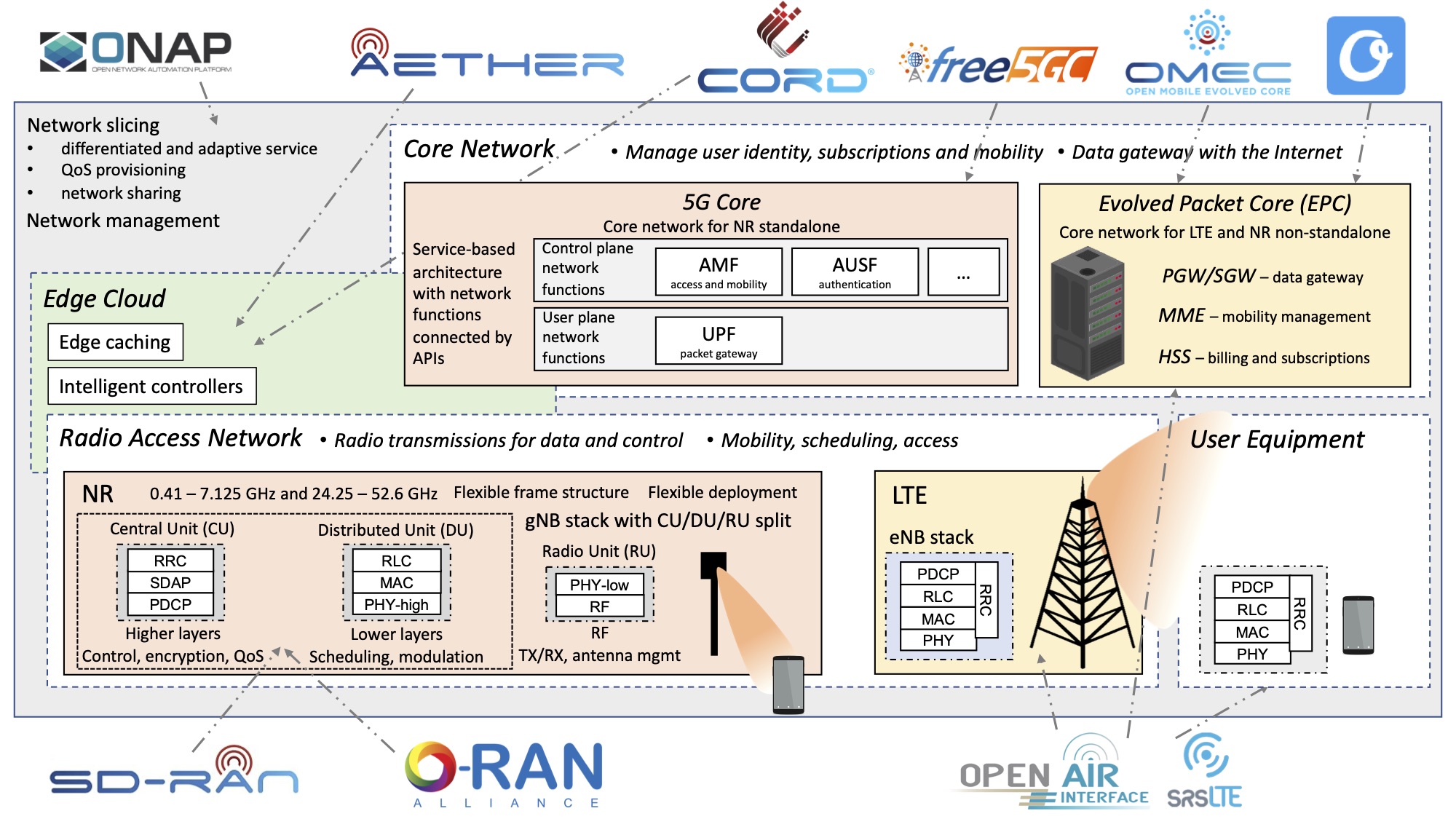Open, Programmable, and Virtualized 5G Networks
Open, Programmable, and Virtualized 5G Architectures
Mobile networks are transitioning from monolithic architectures, based on dedicated “black-box” hardware with proprietary firmware and software, to disaggregated deployments based on open source software that runs on generic SDR or “agnostic” computing devices. This trend is not new to cellular networking, as it has been part of the general discussion around 4G cellular networks. However, while software-based design represents a relatively recent evolution in the context of 4G networks, 5G specifications have foreseen the flexible deployment of agile, softwarized services already in their early stages, with their application to key infrastructure components such as the core, the RAN and the edge cloud. This “flexibility-by-design” puts 5G networks in the privileged position to meet the requirements of heterogeneous traffic classes, mobility and advanced applications through design that is unified, open and dynamically changeable.
We present an overview of open, programmable, and virtualized 5G architectures in our paper Open, Programmable, and Virtualized 5G Networks: State-of-the-Art and the Road Ahead.
